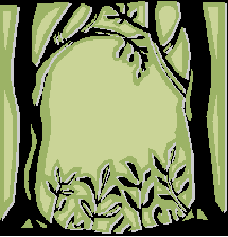




1. |
How harvesting intensity affects forest structure
and composition “natural forests are less often ‘managed’
than ‘mined’ for selected high-value timber species or fuel wood.” This
paper studied the effects of logging on structure and diversity in forests
of mixed-species used for timber and fuel instead of selective commercial
logging. Four different sections were tested.
1. Control –no harvesting -basal area increased by 26 percent in all diameters -canopy intact, more fauna -species richness in larger trees increased (greater than or equal to 15) 2. Low-intensity harvest –trees >= 45cm diameter, leaving a couple for seed -basal area increased a little, a lot from small diameters and decrease in large diameters because of exposure to full sunlight after others were cut down -specie 3. Moderate-intensity harvest –trees less than or equal to 20 cm and more than 60 cm, plus ones damaged from logging, and leaving some for seed -basal area increased a little more, mostly in 10-20, 35-55 diameters -rich in intermediate speciess richness in larger trees increased |

2. 
3. 
4. |
This paper studied the regrowth of secondary forests
on old farm land. These are fragments of the main forest and we want to
see how they can get back to being the primary natural rainforest. It’s
hard because for a fragment, the edges are hurt by change in the microclimate:
wind, sun, exposure.
1. light fragmentation –has side facing natural forest -bole volume was near that of primary forest in 50 yrs, but species composition still different for first 200 yrs -mainly medium sized, mid successional 2. high fragmentation –completely out in non-forest land -also reached similar bole volume in 50 years, but soon 1/3 lost because lack of seed dispersal, these are mainly early successional species, grow fast but don’t last too long. -mainly medium sized, mid successional 3. Primary forest –mainly late successional Types of logging: Polycyclic –10-30 yr cutting cycles Monocyclic –60 yr cutting cycles --allows regrowth |
|
Home
|
Index
|
Preservation
|
|
Goals
|
Characterization |
Time plan |
|
FAQ's |
Monitoring |
Members |
|
Presentation |
Minutes |
Introduction
|